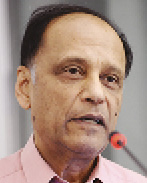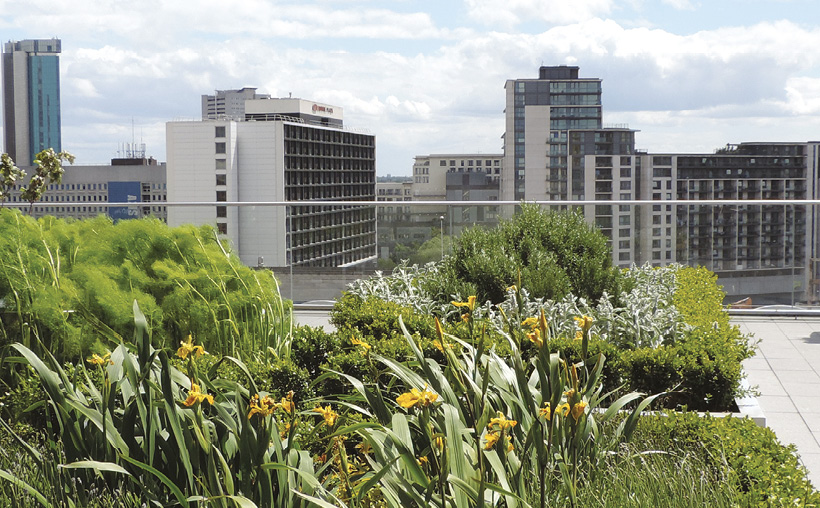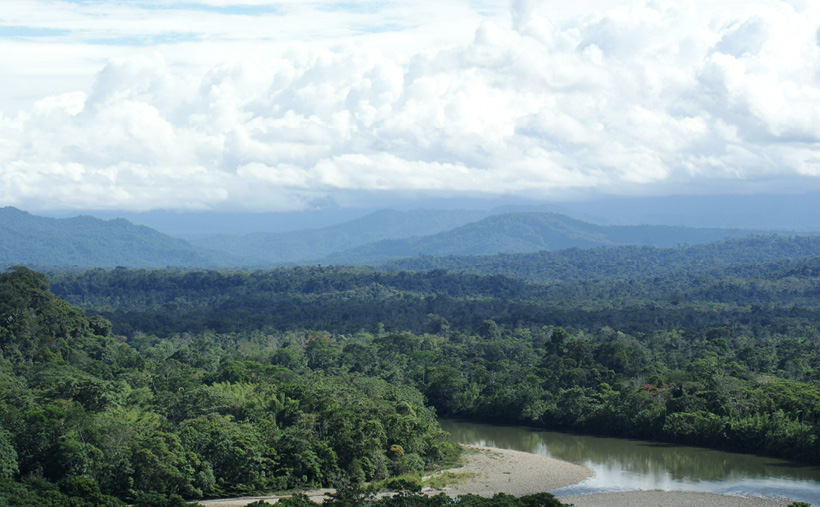FST JOURNAL
Biodiversity
DOI: https://www.doi.org/10.53289/ZRAC7551
Including nature in economic understanding
Partha Dasgupta

Professor Sir Partha Dasgupta FRS FBA has been a Professor of Economics at the University of Cambridge since 1985, serving as Chairman of the Faculty of Economics from 1997 to 2001. He has won numerous awards and in 2002 he was named Knight Bachelor for services to economics. His research interests have covered welfare and development economics, the economics of technological change, population, environmental and resource economics, and the economics of social capital. In 2019, he was commissioned by the UK Treasury to lead a global independent review on the economics of biodiversity.
Ecology is a relatively new discipline. Good textbooks have only been available for the last few decades. In addition, people in general do not perceive signals from nature very easily. While humanity makes use of nature’s goods and services all the time, their value is not recorded economically because it is not converted into prices. Yet there is no intrinsic reason why ecology cannot be grafted onto, or blended within, economics.
Inclusive wealth
The UK Government commissioned an independent review on the economics of biodiversity. One of the key concepts in the final report was that of inclusive wealth, which is really a very intuitive notion. Private companies have no difficulty comprehending it because they have balance sheets. Nations, however, do not have balance sheets and have developed a habit of estimating flows by GDP, which is income. Yet we also need an inventory – of objects and durable goods. To discuss sustainable development, for example, it is necessary to know the assets that are being handed on to the following year, particularly in comparison to the assets that were inherited from the previous year.
Just relying on GDP fails to take into account the depreciation of capital – that is, whether the stock of something is more or less than it was last year; and if not, why not. So if a wetland is deteriorating, for example, it is depreciating in economic terms. The notion of inclusive wealth is nothing other than a confirmation of the need to measure an inventory of goods. And of course, if the social worth of those objects can be priced, then values can be added and that will contribute to an estimation of wealth.
This valuation of wealth should be inclusive for two reasons. First, because the prices are social prices and not necessarily market prices, for the reason that much of nature does not actually have a price in the market. The other is that natural capital, nature, is included in the measure as well as produced capital and human capital (such as education and health). Inclusive wealth includes the whole range of ecosystems.
 The secret roof garden of the Birmingham Library – for urban areas, one of the key recommendations is a focus on gardening and the provision of more green space
The secret roof garden of the Birmingham Library – for urban areas, one of the key recommendations is a focus on gardening and the provision of more green space
It is almost inevitable that this will become part of standard economic analysis as it has a very strong theoretical backing and the foundations are solid. To properly discuss welfare or wellbeing requires a focus on assets – those stocks on the basis of which our lives depend.
Inclusive wealth sits very comfortably with GDP because these two measures are designed to serve different purposes. GDP was invented to give a sense of the extent of economic activity for short-run macro-economic management. It would be a mistake to use it to discuss economic success over the long run.
Carrying capacity
The bedrock of the review is the finding from earth sciences that humanity’s total demand for nature’s goods and services vastly exceeds the earth’s capacity to continue to supply them on a sustainable basis. So this is a firefighting situation. It is vital to find ways to cut the gap between capacity and consumption to zero, i.e. to create a balance. If sustainable development means anything, that balance must then be maintained for the long term. Nature has to be considered as a series of assets that have to be managed responsibly.
The entire language we use for economic analysis must place nature at the centre. Inclusive wealth is just one part of that new approach which will involve wholesale recalculation and re-estimation.
Then there is the question of reforming the institutions that support these activities, at local, national and international levels.
Citizens live in local surroundings and our activities are, in large part, confined to that. So at the local level, at least for urban areas, one of the key recommendations is a focus on gardening and for the provision of much more green space: it is good for our health, quite apart from the fact that it rejuvenates nature in the local environment. Another task for the citizen is to lobby local and national government to include natural capital in their investment and other policy decisions.
At the national level, subsidies for nature should be removed immediately. In fact, nature is often not zero-priced, it is commonly negatively priced because its use is subsidised. We are actually paying ourselves to degrade nature at present.
Then, at the international level, it is high time there was an international institution charged with monitoring and managing the global commons, such as the open oceans. Such an institution could raise vast sums of money to protect the oceans.
Biodiversity is one of the characteristics of ecosystems. It poses the question: is the portfolio of assets diverse, or is it concentrated on just a few things? Now, ecosystems differ greatly in size. My mouth is an ecosystem but so are the oceans. Yet it is possible to adopt a consistent way of thinking about these assets at various levels of scale. Doing so forces an holistic approach because it looks at the whole of the biosphere, but considers it in its component parts which are all interrelated.
So the review was not just about measuring carbon. Biomass was not considered as a unit of account either. Instead, the focus was on ecosystem functions.
Now, I have a background in economics. My experience of very, very large-scale global models is that they can be very misleading and result in mistakes. Ecologists, on the other hand, tend to study the small scale. Of course, small scale in terms of the planet could mean the Amazon rainforest. Yet, studying samples and how the various elements interact with one another means considering them as integrated systems. It is not a great idea to strive for a mega-model of the biosphere. Starting with the various components of ecosystems, it is evident how at every stage those small systems are related to one another. That way, an overall view can be built up, rather than trying to impose a top-down approach.
 Ecologists tend to study the small scale – but small scale in terms of the planet could mean the Amazon rainforest.
Ecologists tend to study the small scale – but small scale in terms of the planet could mean the Amazon rainforest. The global commons
After the Second World War, the nations of the world were farsighted and established international institutions like the World Bank and the International Monetary Fund. These were designed to supply global public goods. The international community should now be considering establishing bodies to protect and manage the global commons, like the open oceans. By collecting rents for their use, a huge amount of revenue could be generated for a wide variety of conservation projects. Yet there are also global commons, in the form of peatlands and the tropical rainforest, that lie within national jurisdictions.
How should that work in economic terms? Obviously, countries should be compensated for protecting them, because they constitute global public goods with everybody enjoying the benefits and these countries will be bearing the entire responsibility of protecting them. Some subsidies are therefore required for this. To be clear though, in this context ‘subsidy’ is actually a payment for ecosystem services, such as is already commonly used in countries like Costa Rica and China, at the local level.
Focussing on consumption, though, avoids the question of population growth. Regardless of one’s views on the general topic, there are things that we should be doing. Globally, over 200 million women of reproductive age have an unmet need for family planning: they do not have the equipment, the knowledge or the facilities. Yet nothing is being done about it. Of all the foreign aid going from OECD countries, less than 1% goes to family planning. Now, everyone says that women’s empowerment is extremely important but that will not happen if they do not have control over their own bodies. To give another example: people say that these issues can be tackled through education. However, after all the years of investment in education, the World Bank reports that a third of women aged 15–24 in the poorest countries are still illiterate. There is a good deal we can do right now.
Grassroots strategy
What could we do in the UK? Well, let’s start at a grassroots level, with every child having nature study as compulsory. Introduce this at primary school level, but revisit it right through to tertiary education.
We already have the Three Rs as the basis of our education system, so let’s add a fourth, which is nature studies. Love for nature can only arise if people actually handle nature though: mucking around in soil, examining what is there, the fungus and the earthworms and so forth. That could be the beginning of a real cultural revolution.